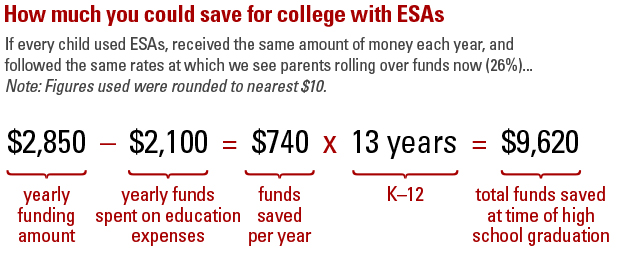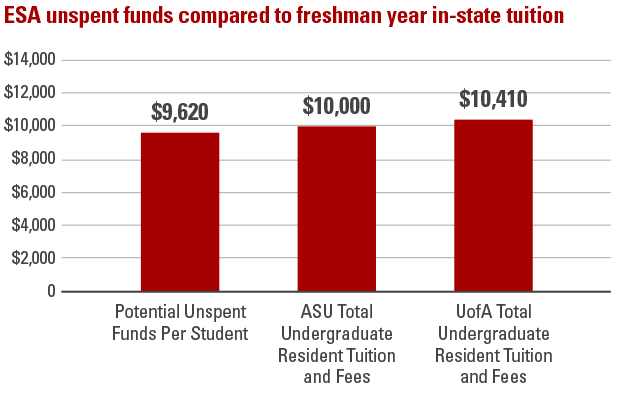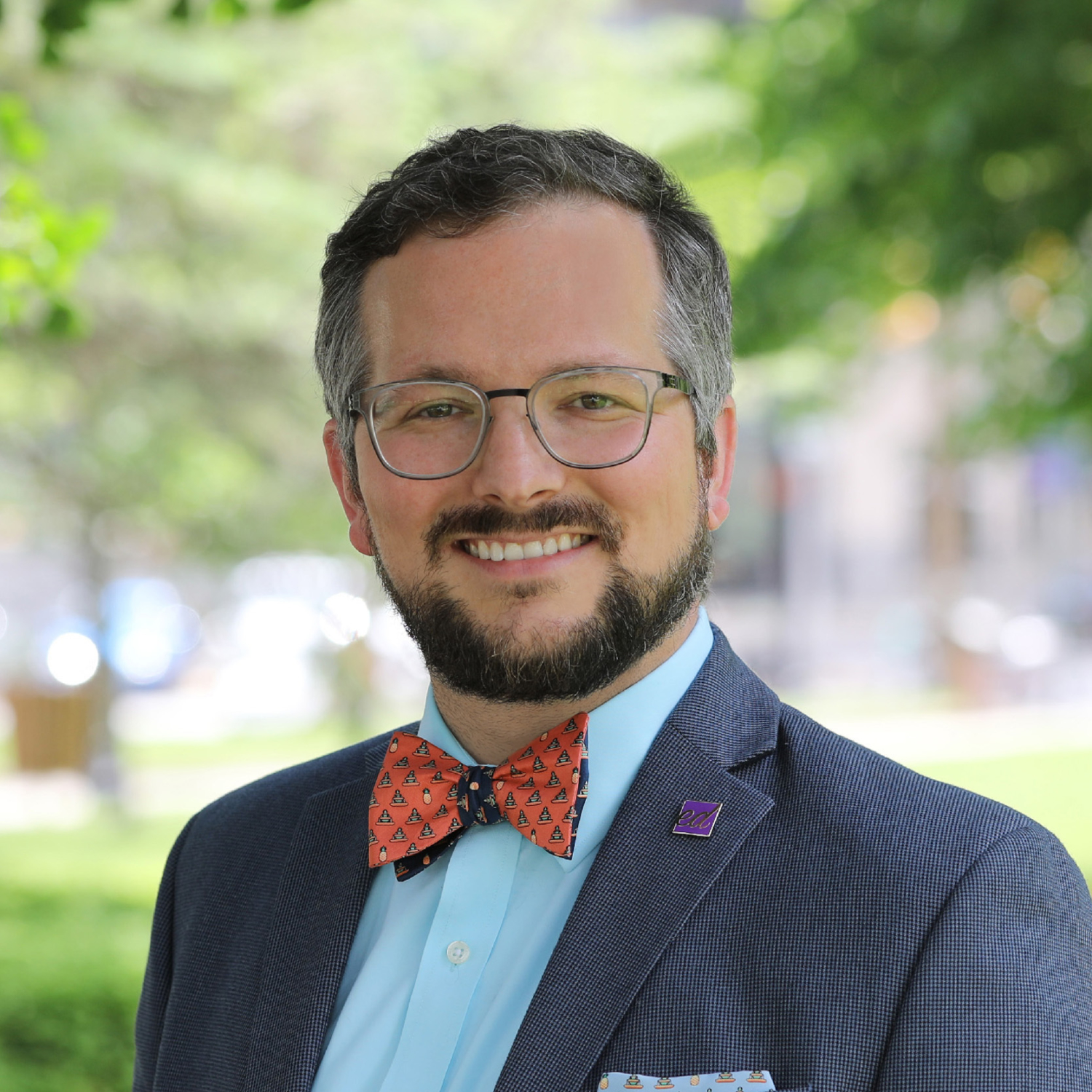Another Way to Save for College?
Let’s get hypothetical: What could happen if every student in Arizona had access to education savings accounts (ESAs), called Empowerment Scholarship Accounts, and used the unspent funds to save for college?
For those not yet familiar with the program, ESAs offer parents government-authorized savings accounts loaded with 90 percent of their child’s state education dollars. Whether they choose a single private school or multiple learning options, parents have the freedom to decide how state funds will educate their children.
Since students’ ESAs are not closed until they graduate from college or four years have passed after their high school graduation, utilizing ESAs as another way to save for college is theoretically possible if the program’s eligibility expands drastically to include all students.
In the most recently reported quarter used in Lindsey Burke’s report on how Arizonans are using ESA funds, 26 percent of these funds were left unspent, meaning they can be rolled over for future education-related expenses, like college. Moreover, these rolled-over funds are in addition to any college expenses already paid for with ESAs, such as college textbooks, college tuition, or contributions to a 529 college savings plan.
Since students’ ESAs are not closed until they graduate from college or four years have passed after their high school graduation, utilizing ESAs as another way to save for college is theoretically possible if the program’s eligibility expands drastically to include all students.
The most recent information available through the Elementary/Secondary Information System shows that of Arizona’s 1,071,751 students, 125,806 have an Individualized Education Plan (IEP). Since students with IEPs receive various funding amounts based on their disability, let’s focus on the 945,945 non-IEP students. Assuming equal distribution, there are 72,765 non-IEP students per grade level. Here we go:

ESAs could mean big college savings.

As someone who filled out more than 100 scholarship applications during the break between semesters his senior year of high school, I know how significant this would be to many students and families—potentially 73,000 students per graduating class.




